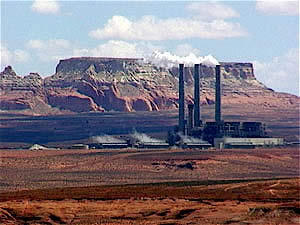 Indian Country by Peter Matthiessen
Indian Country by Peter MatthiessenHow I came to be reading Indian Country. I had not lived in Needles long and I was trying to learn as much as I could about my new home. I wasn't homesick exactly but I missed seeing the San Bernardino Mountains every morning. I certainly didn't miss the congestion, the smog, and the crime.
I attended a talk entitled "Environmental Values" at the Needles Branch Library. A member of the audience was the environmental representative of the Fort Mohave Indians. He talked about, among other things, the underground water resource at Ward Valley. When I got home I researched it a little online. I was only interested in the possibility of another water source for Needles in addition to the Colorado River. What I found amazed me. It was a very sobering thesis by Philip M. Klasky, An Extreme and Solemn Relationship, about the fight to keep a nuclear waste site from being built in Ward Valley, incredibly, for the state of California. Suddenly I was in an area I didn't intend to be and reading about a far more interesting story.
Klasky begins his thesis with these words:
"These Tribes are the Indigenous People of this region and hold an extreme and solemn relationship with the Land, Animals and Water. These traditional lands have extreme religious, cultural and archeological, non-renewable sources and resources that relate and tie them spiritually and physically to these areas. The retention of culture, native language, traditions and land based reference areas prominent in native song and oral history is a main objective of these Tribes in order to maintain a distinct identity ...
- from the Resolution of the Colorado River Native Nations Alliance, 1996"
I read the entire thesis and then started to read some of the books in the bibliography for background. That's how I came to be reading Matthiessen's book.
Peter Matthiessen, the author of Indian Country, seems at first to be a naturalist and an environmentalist with his careful attention to the details of the natural environment. But in this book he does a tremendous amount of historical research, travels the land, and engages Native Americans of many nations and their friends to relate to him their sacred relationship with the earth. Klasky wanted to highlight this relationship as the fundamental issue in regard to the nuclear waste site proposed to be built in the upper reaches of the Ward Valley. Beyond being the absolutely wrong choice for a nuclear waste dump because of its proximity to the Colorado River, Ward Valley was ethically also the wrong choice because it is a sacred place to the Fort Mohave and Chemehuevi Indians.
Why read this book? It is a great resource for understanding Native American land claims throughout the US. Although sometimes the author's arguments are a bit hard to follow, the book thoroughly covers many different areas of the US up to 1983. It would be very interesting to fill in the history since that date. Take any reservation in the US and pursue the history of the tribe's relationships with the white settlers and the US government, the tribe's own cultural history, and the meanings they attach to the land they occupy. Look at all factions of the tribe, the "traditionalist" and the "progressives." This book will give you much to ponder. It is not on the list from the California Department of Education website but it is definitely going on Maty's Picks.
Before I continue my discussion of the book, I feel I should update you with some current news related to Ward Valley. It seems there is an option being proposed to Governor Schwarzenegger by the Southwestern Low-Level Radioactive Waste Commission to repeal the law that prohibits the use of Ward Valley as the first regional disposal site to be constructed. This site, were it to be built, would receive "low-level" nuclear wastes from the states of California, Arizona, North and South Dakota for the next thirty years.
See the article in the Needles Desert Star, September 28, 2005.
I don't know what happened with this proposal but it just proves we need to be ever watchful.
In reading Matthiessen's book, I immediately realized my naivete in viewing the tribes as monolithic. Many were divided into factions with some representatives more traditional than others, as with the Hopi and the Mohawks. Some peoples have been grouped with a tribe and in truth are an entirely different people, as with the Seminole and the Miccosukee. Some have been divided by location because of the Removals of many Native Americans, as with the Oklahoma Cherokee and the Cherokee of Alabama or Eastern Cherokee. What comes out clearly, though, in Indian Country, is the excessive unlawful acquisition or pollution of native lands and the shameful greediness of some Americans, their corporations and their politicians.
You will learn much of value from this book. Particularly, that one word in a Native American language can have multiple meanings, as with Eloheh in Cherokee, which means land, history, culture, and religion. There is no separate word for each and therefore they are not conceived as separate things.
An Extreme and Solemn Relationship
I'll be adding a review of Bitterness Road: The Mojave: 1604 to 1860 by Lorraine M. Sherer in a bit. I hope to find a copy to add to my collection of Maty's Picks.
Ward Valley
is a very detailed scientific report on the Ward Valley nuclear waste site.

I dedicate this post to the Big Mountain Dineh.
No comments:
Post a Comment